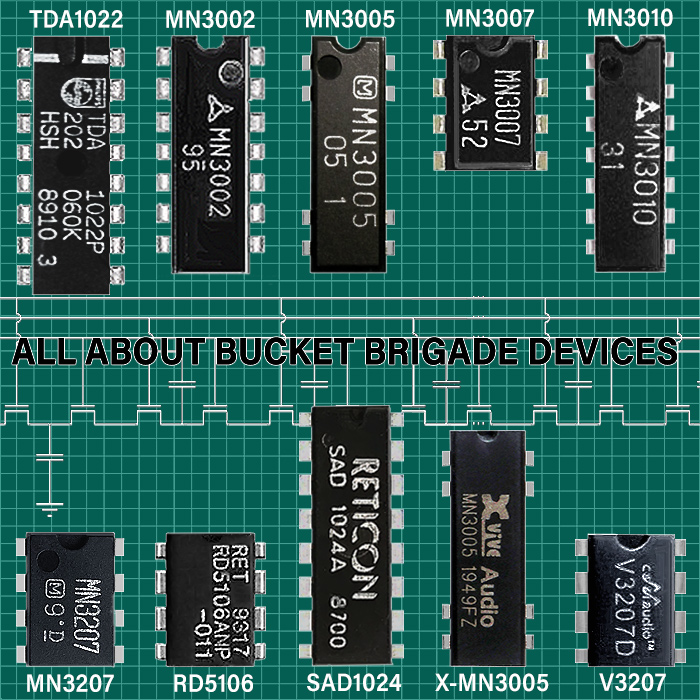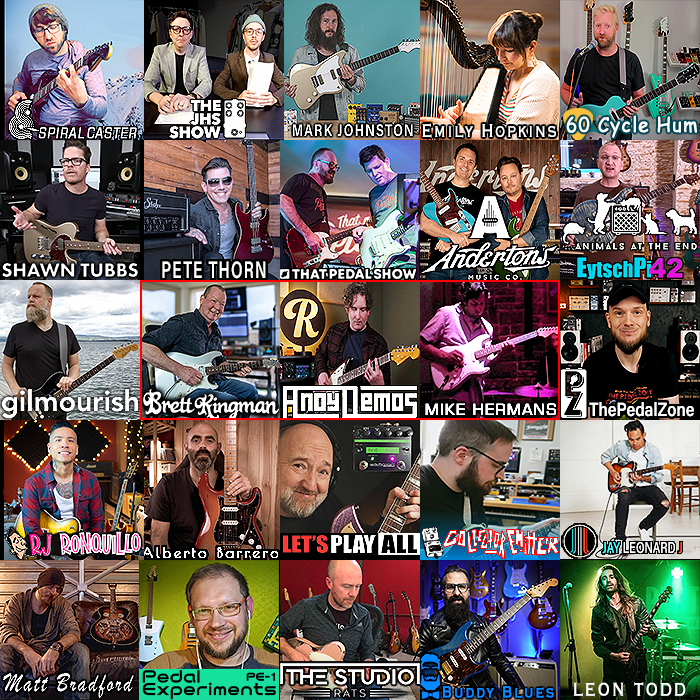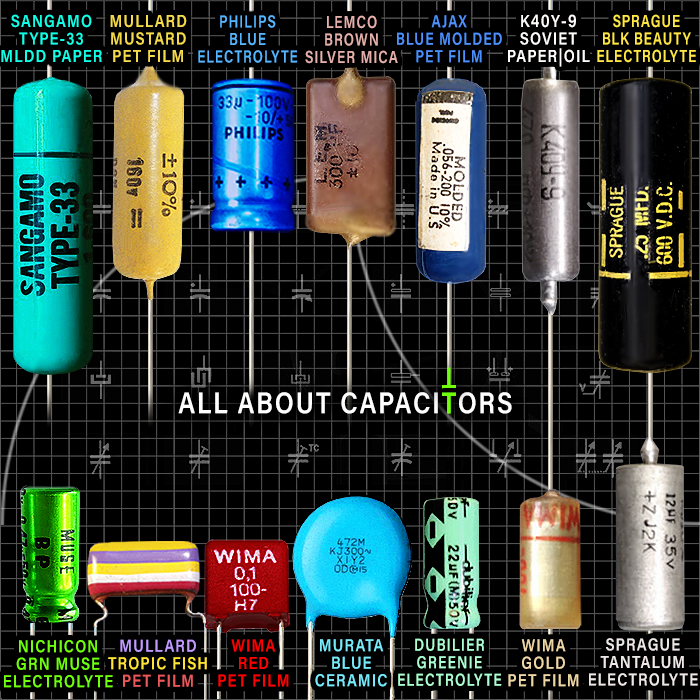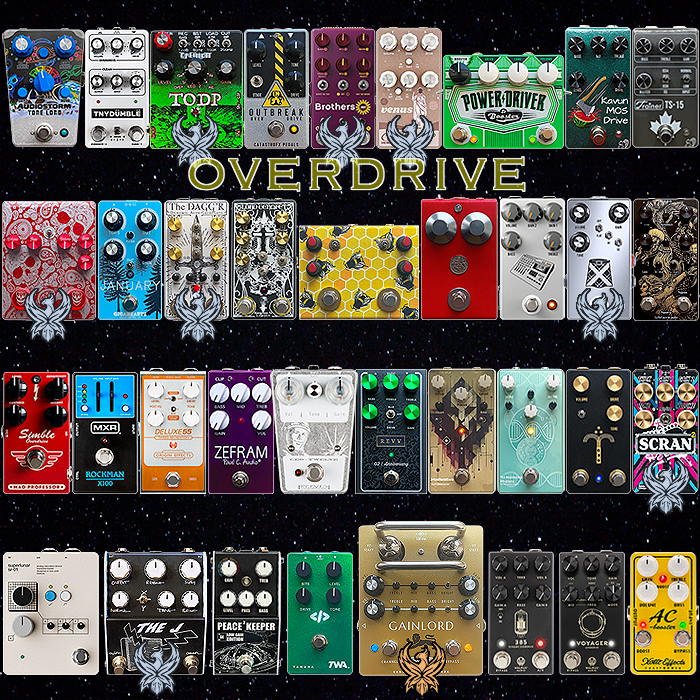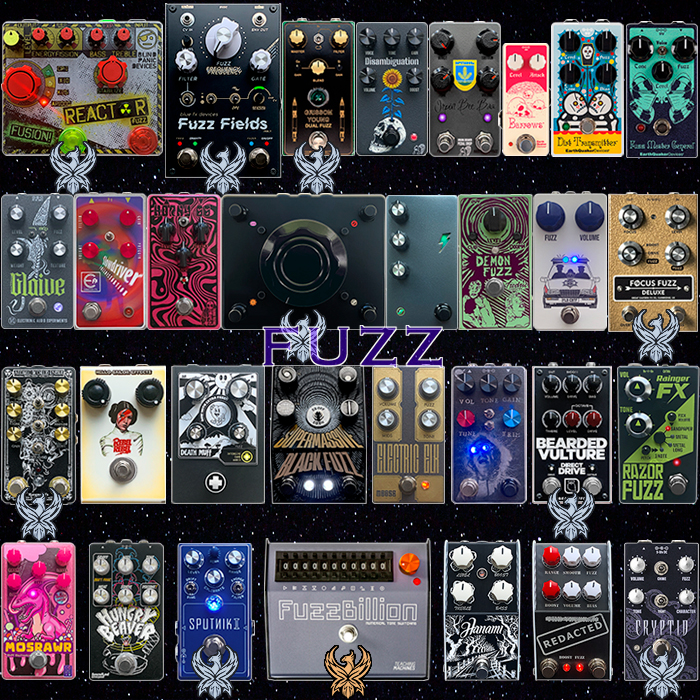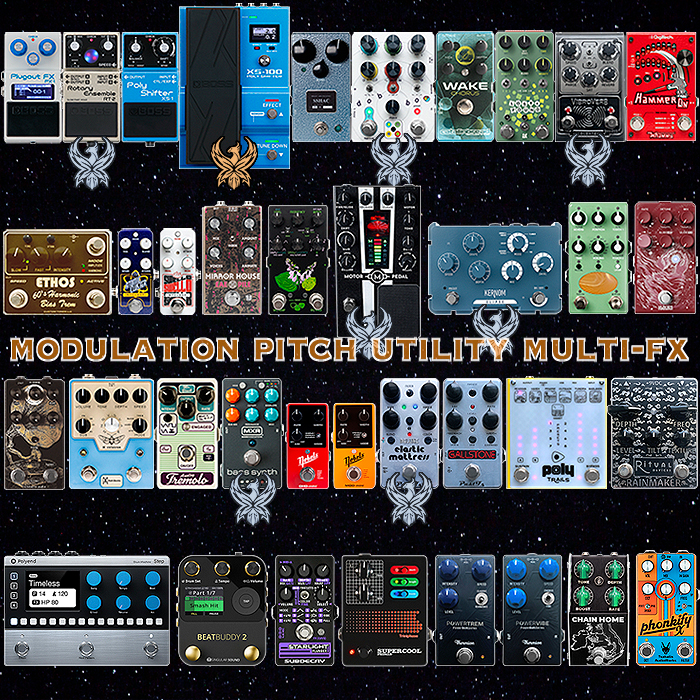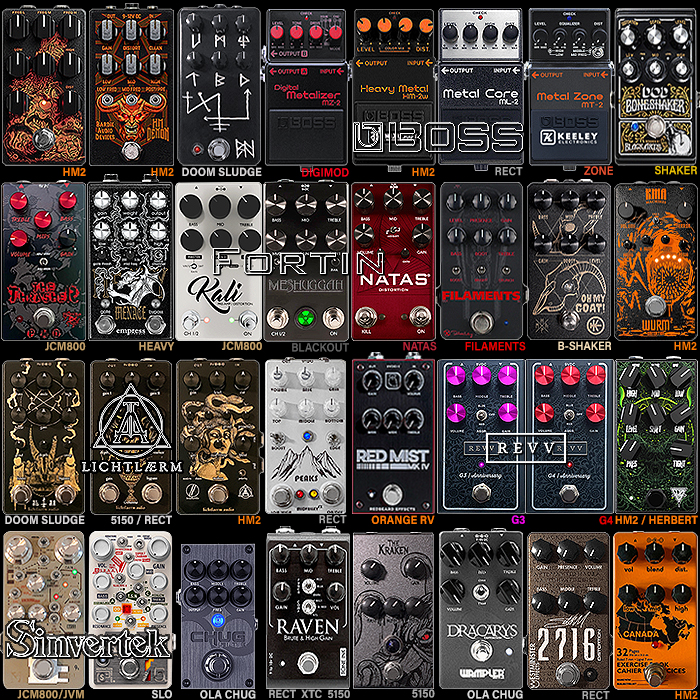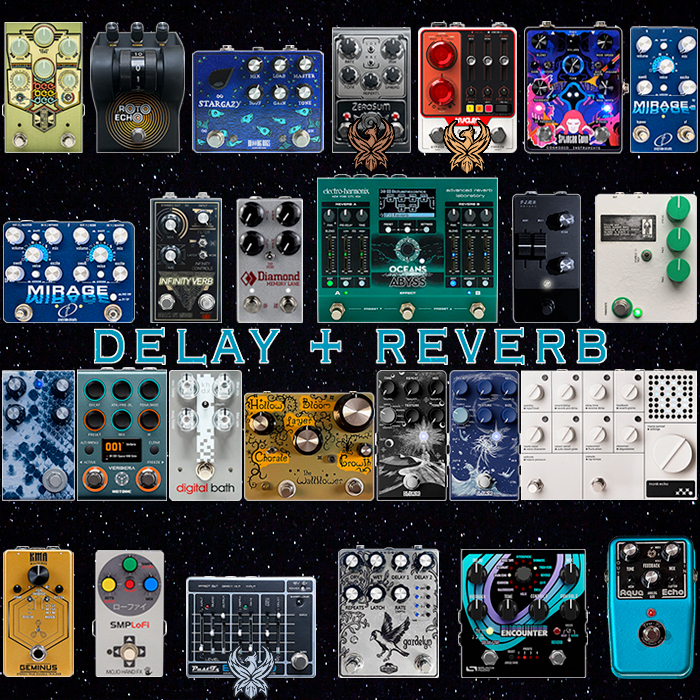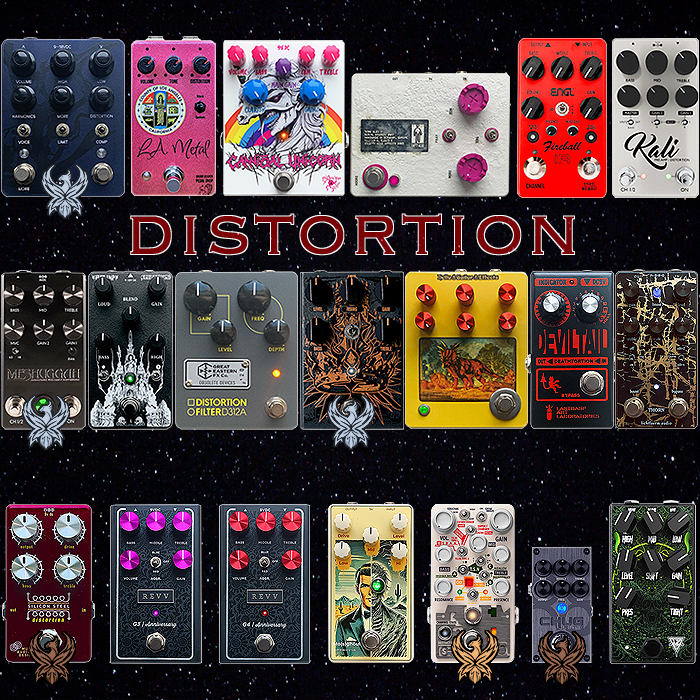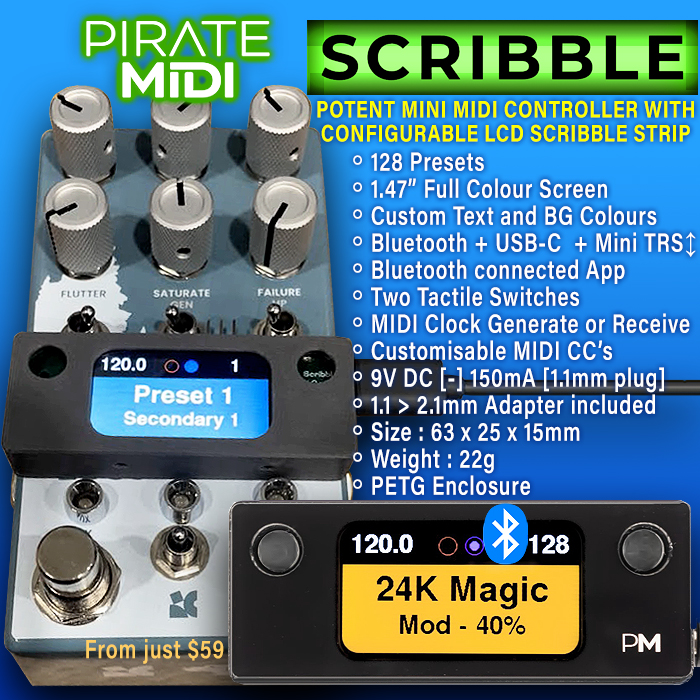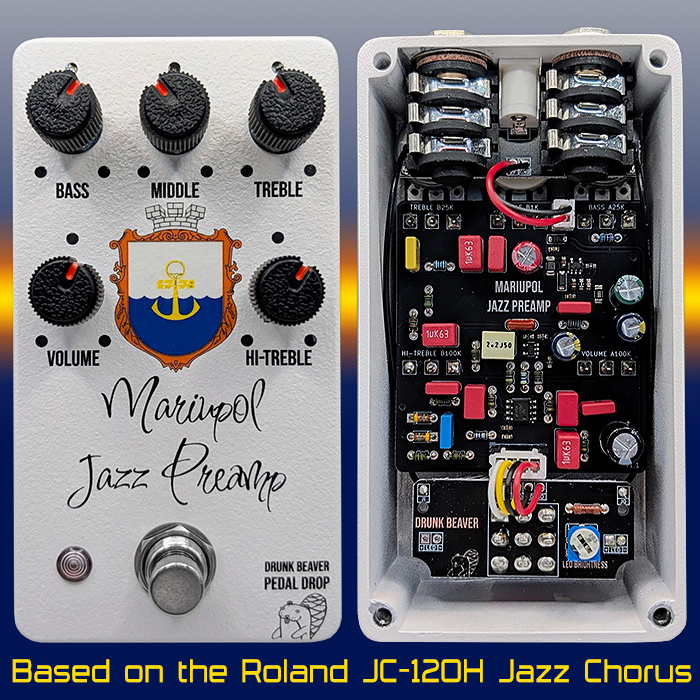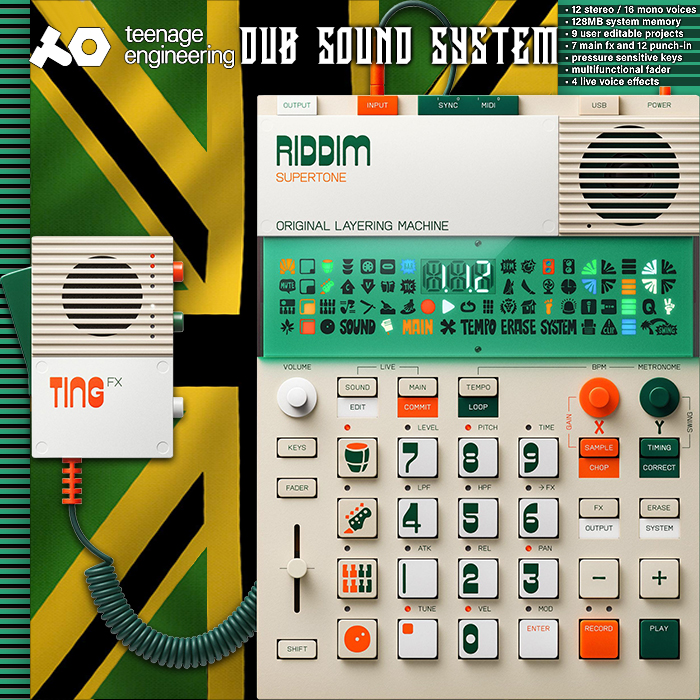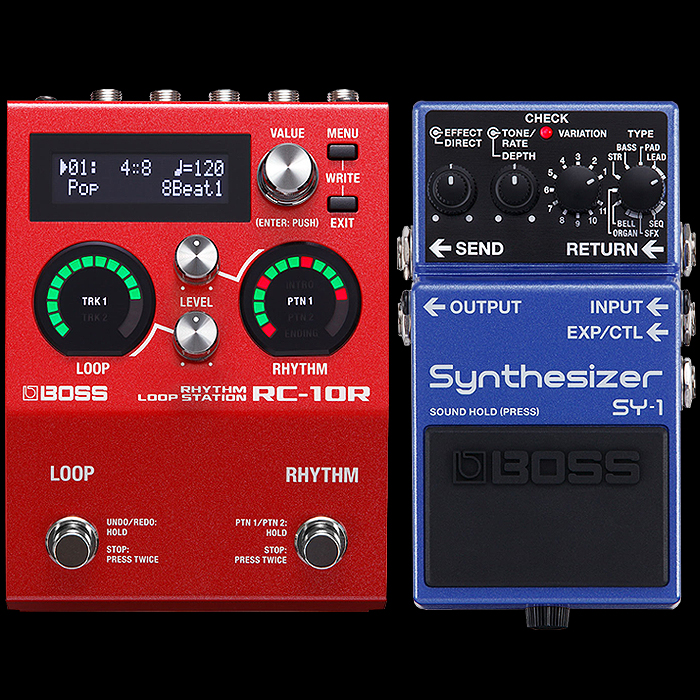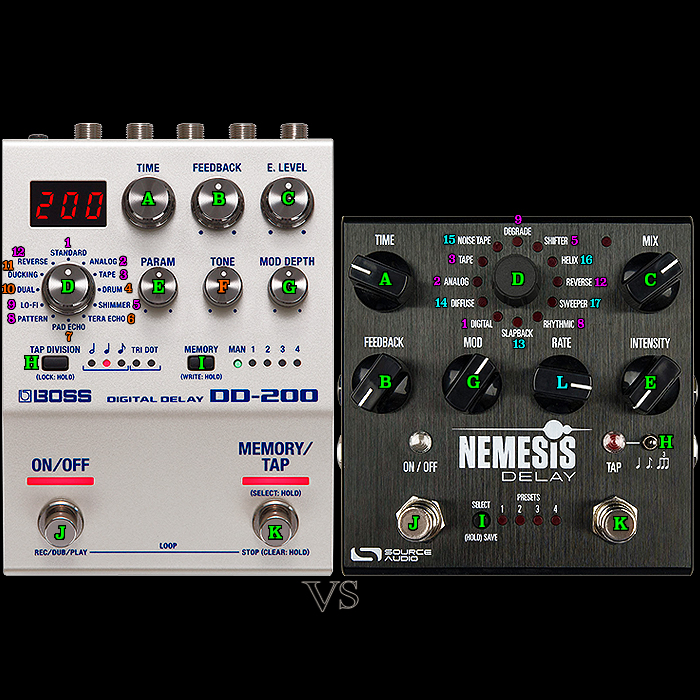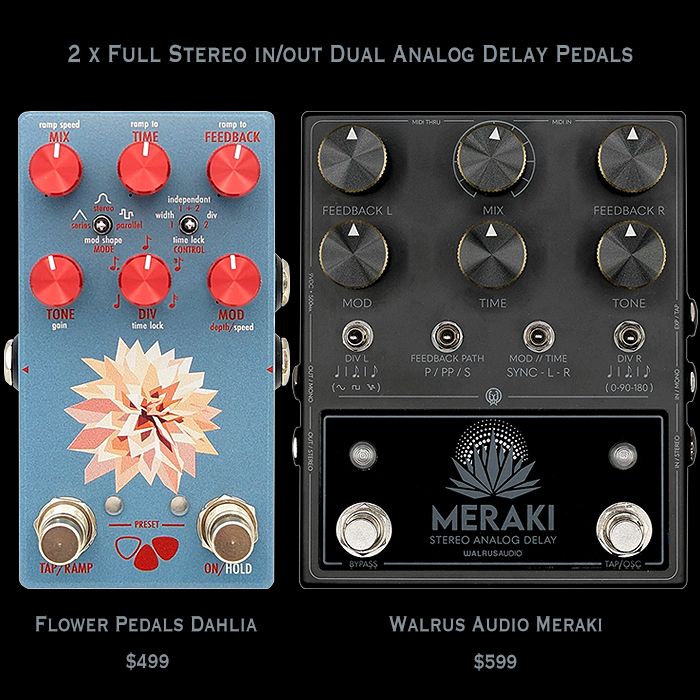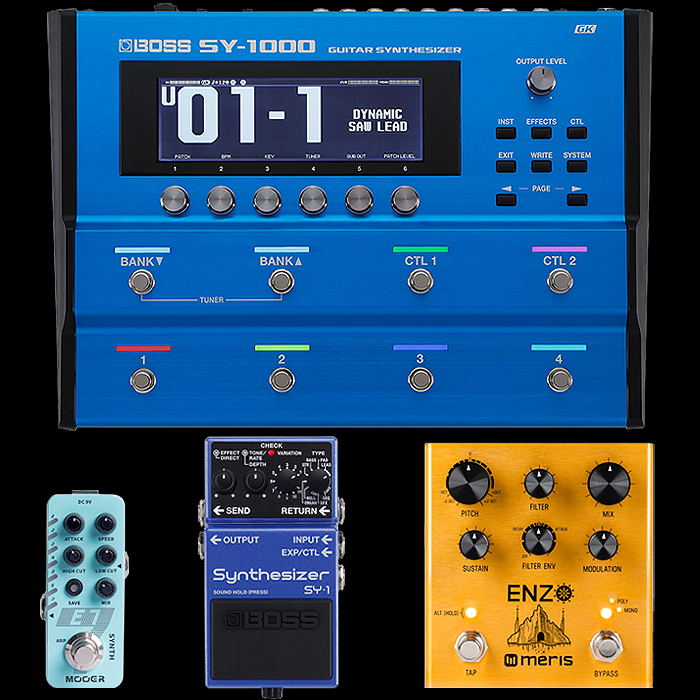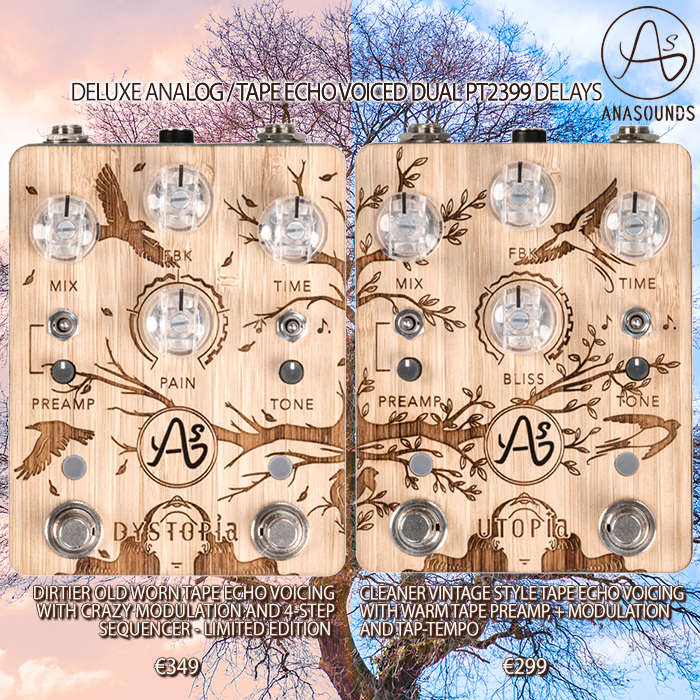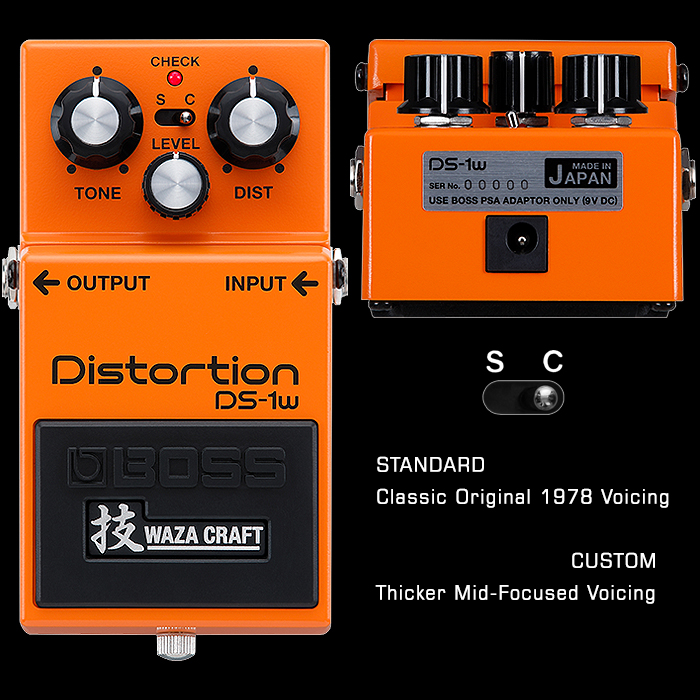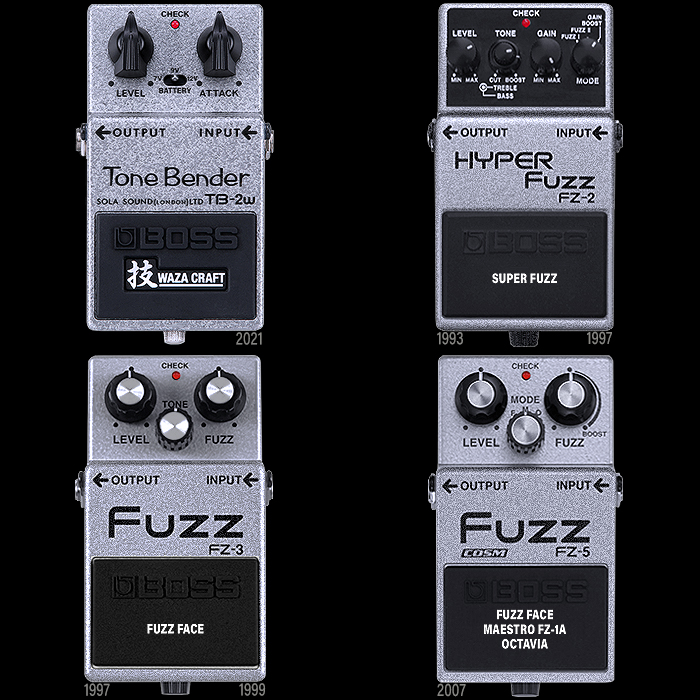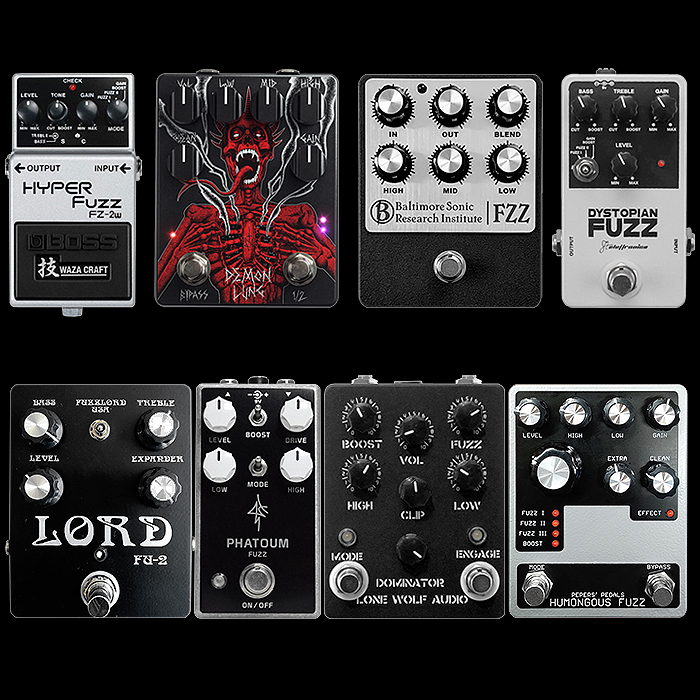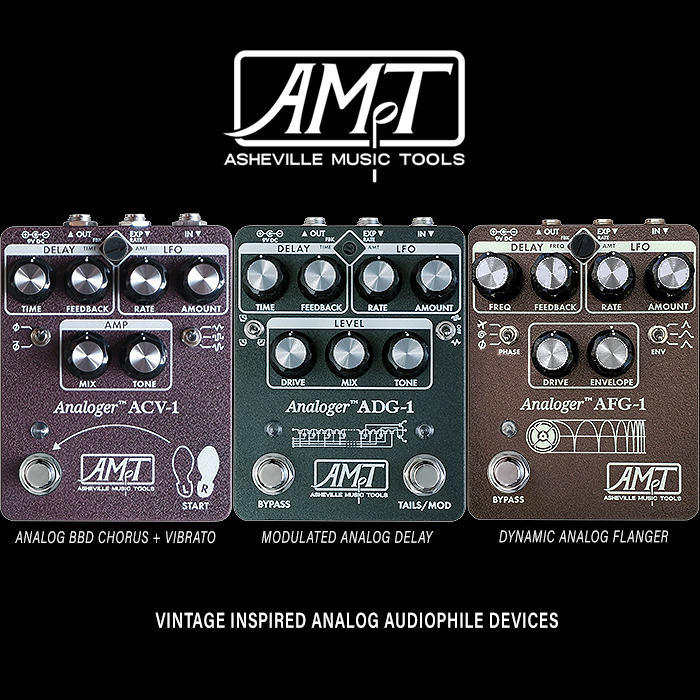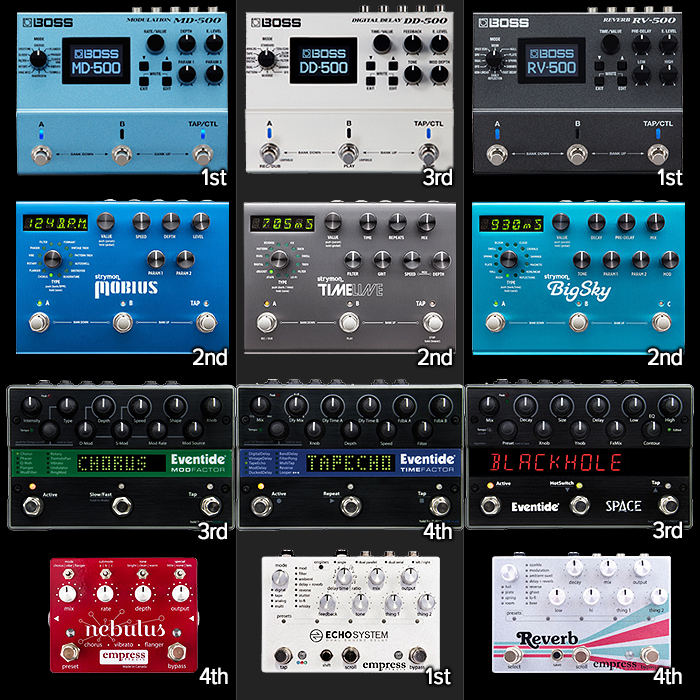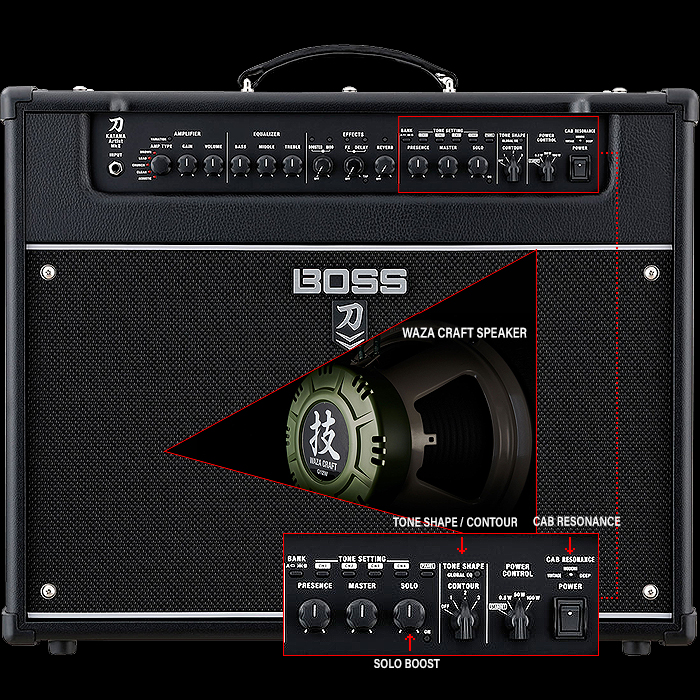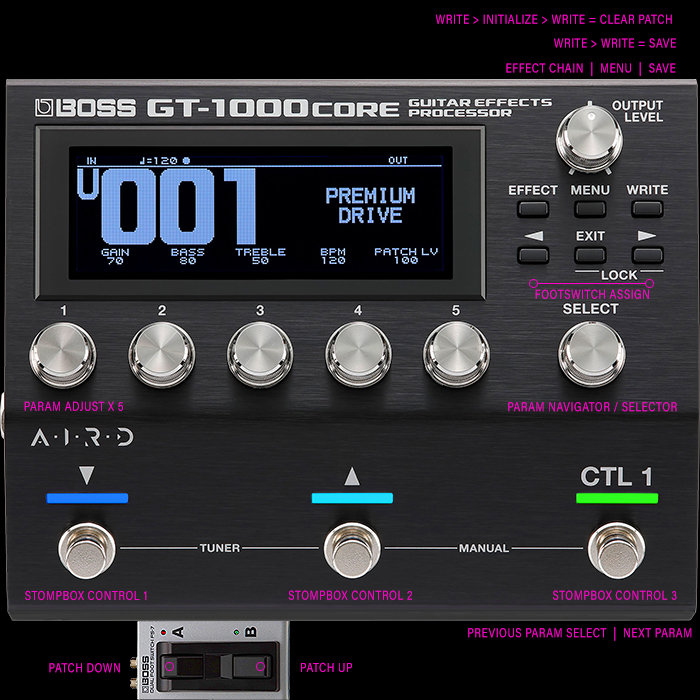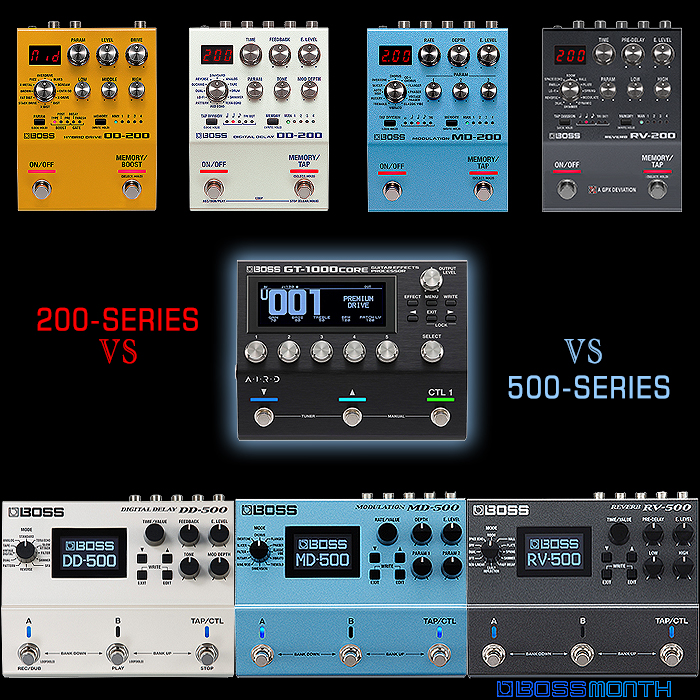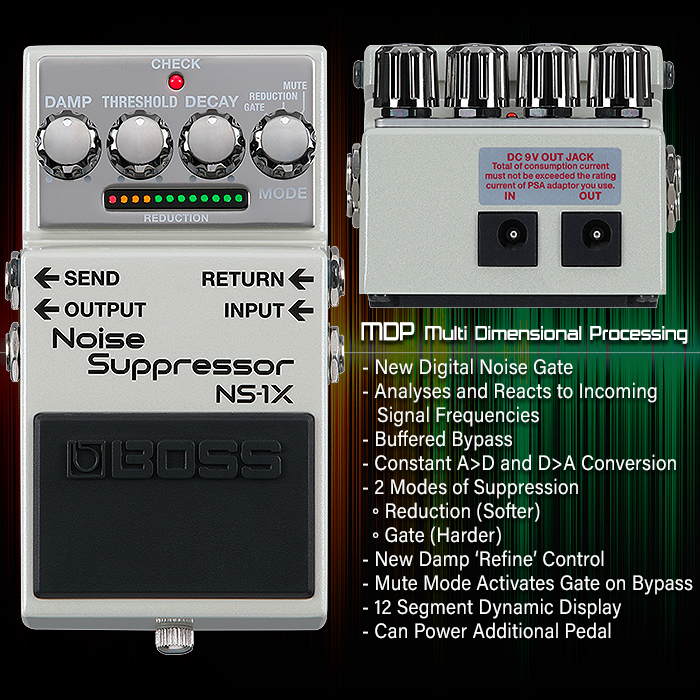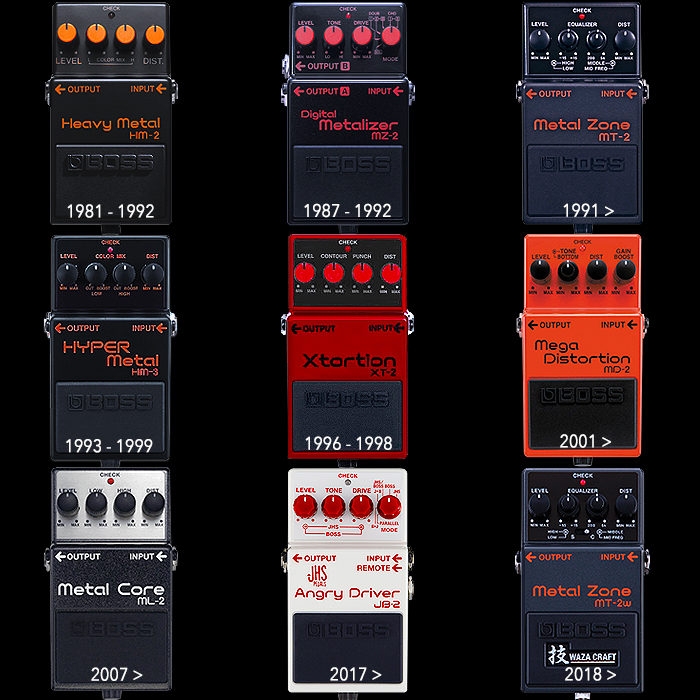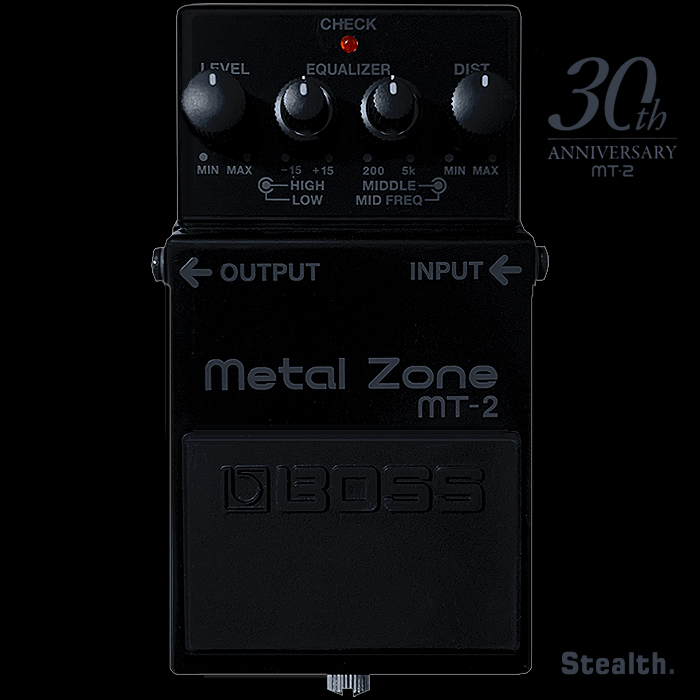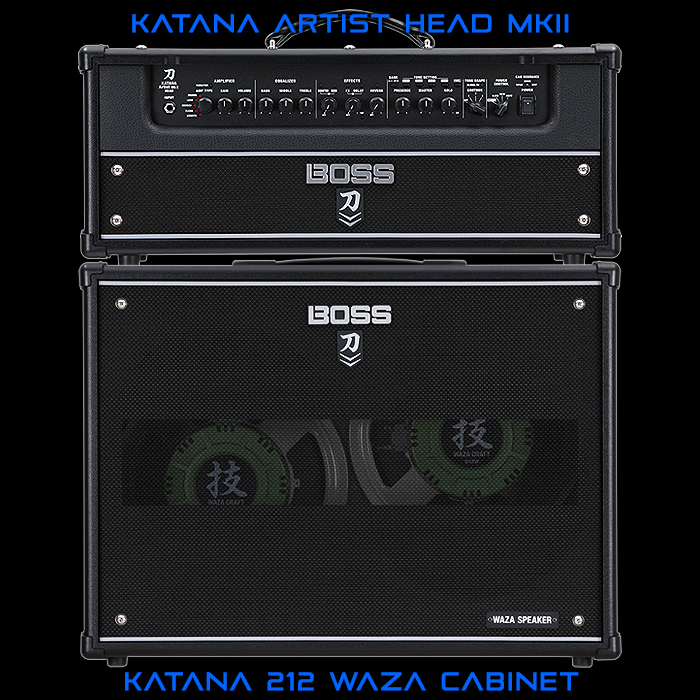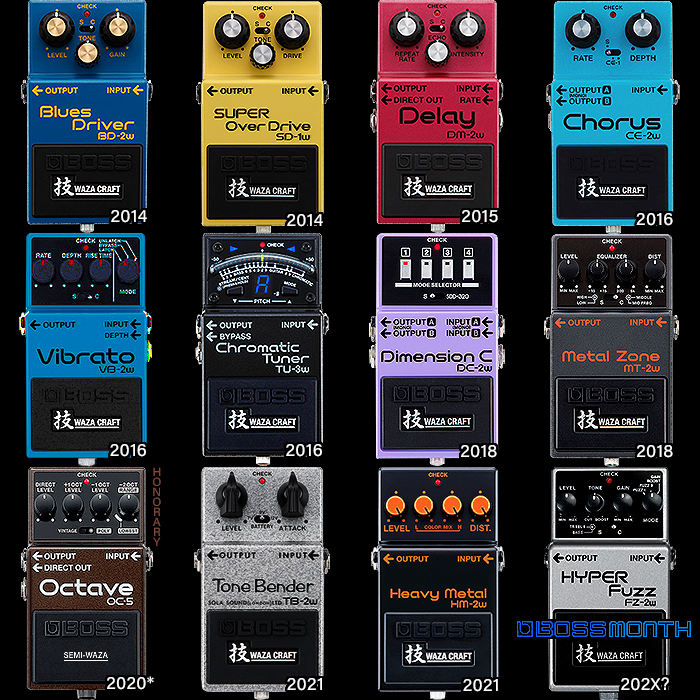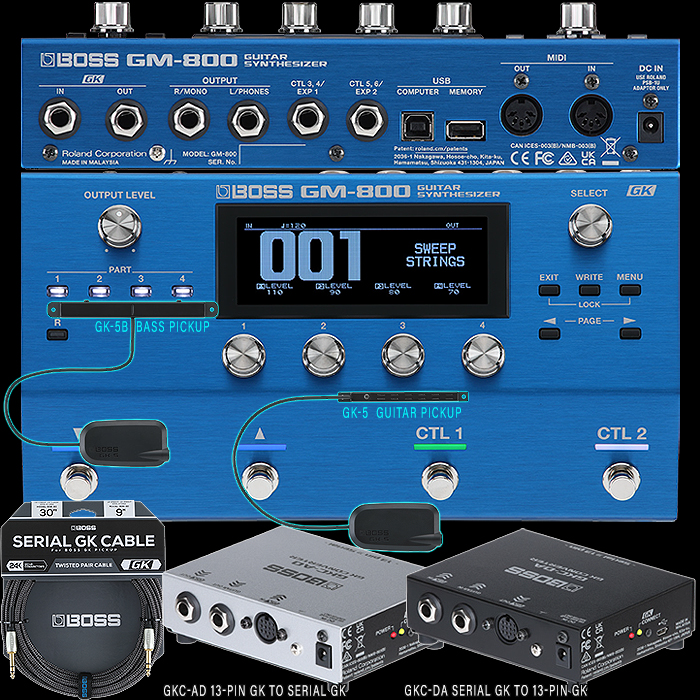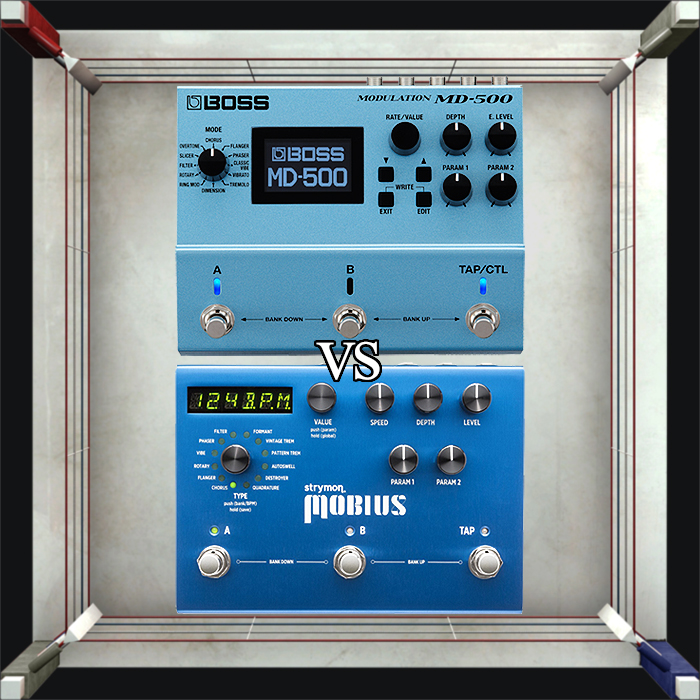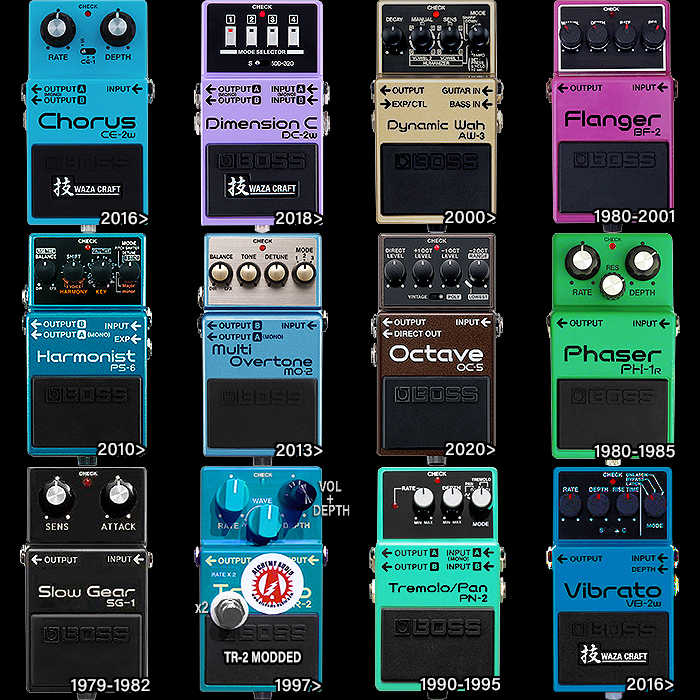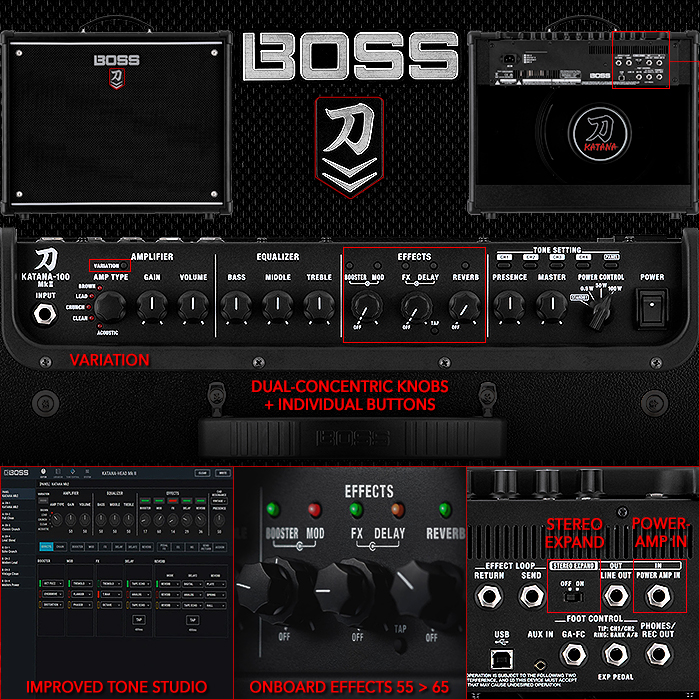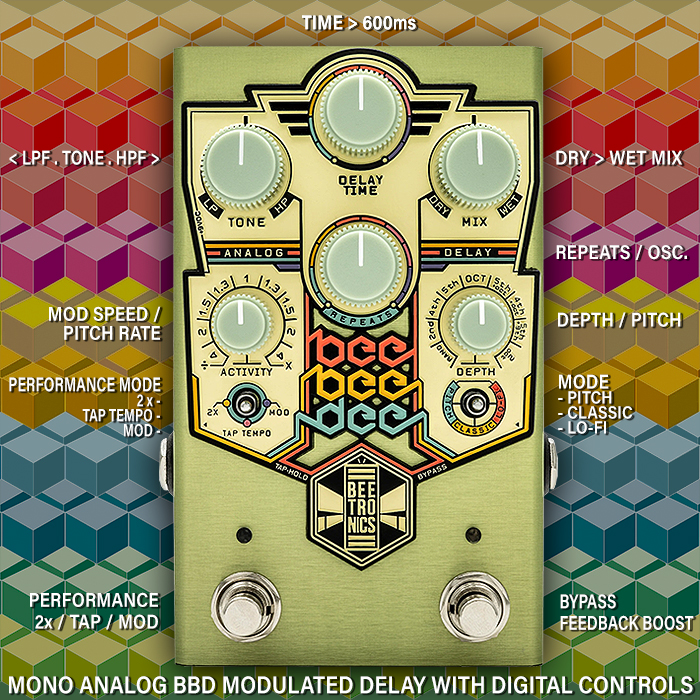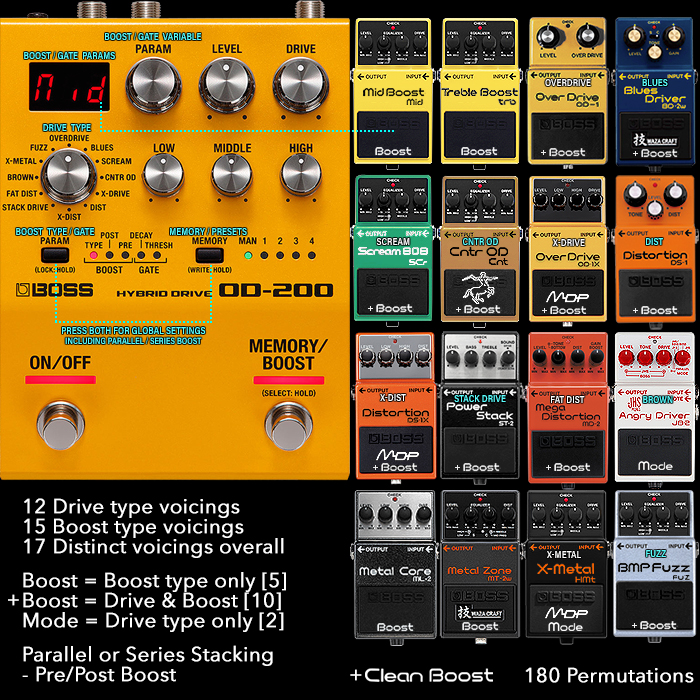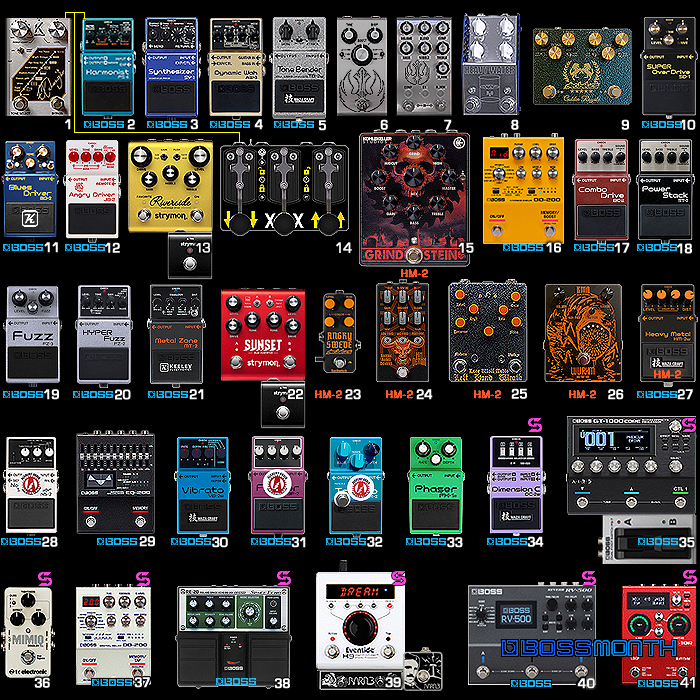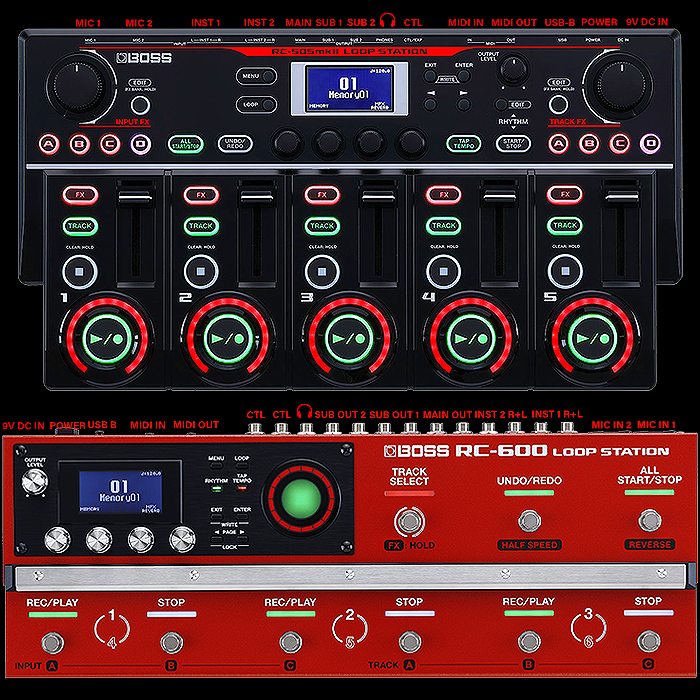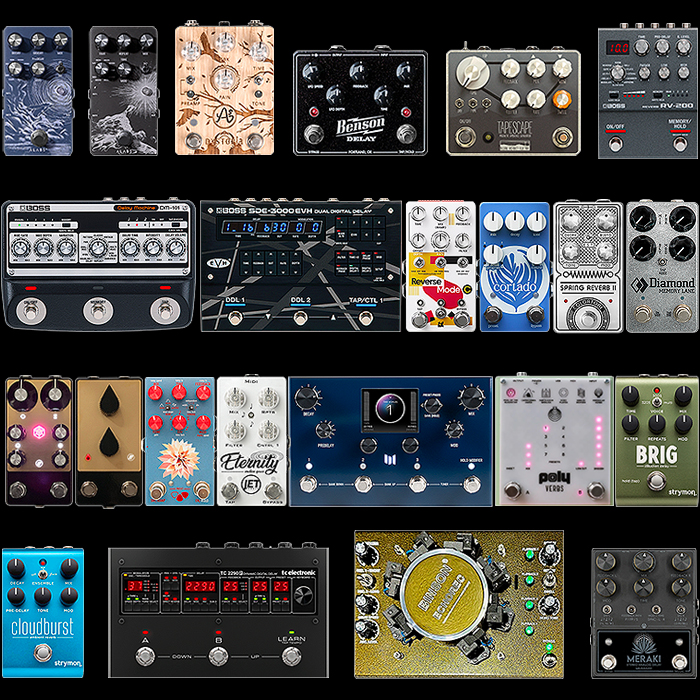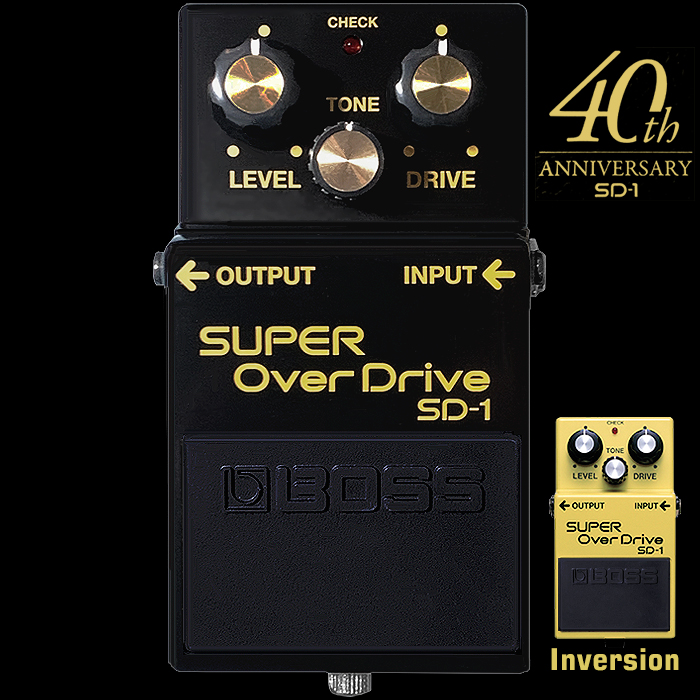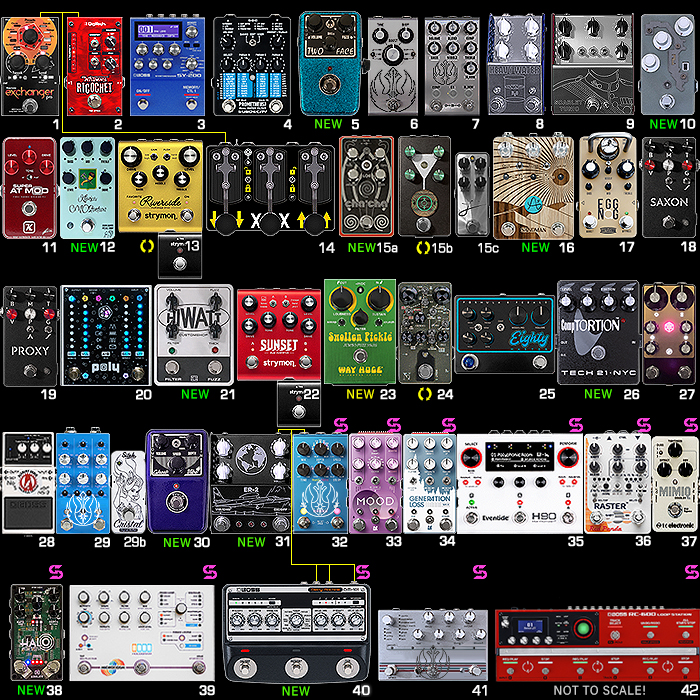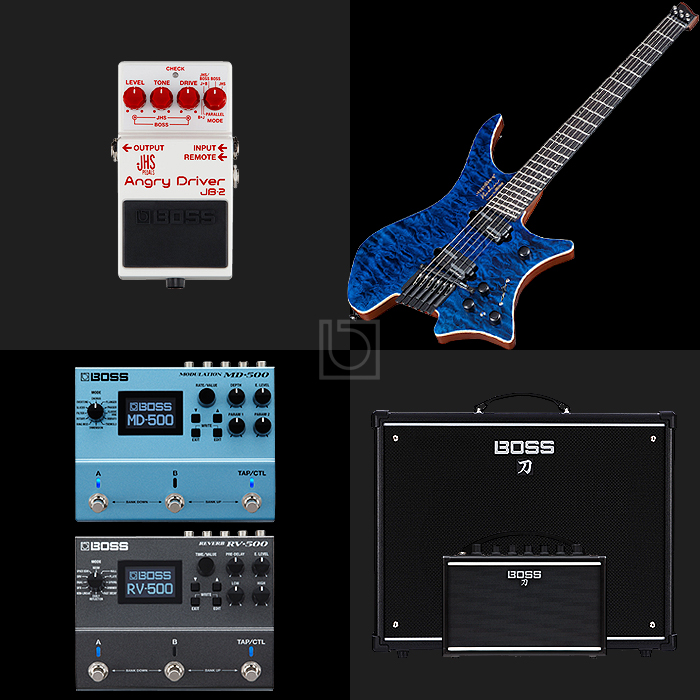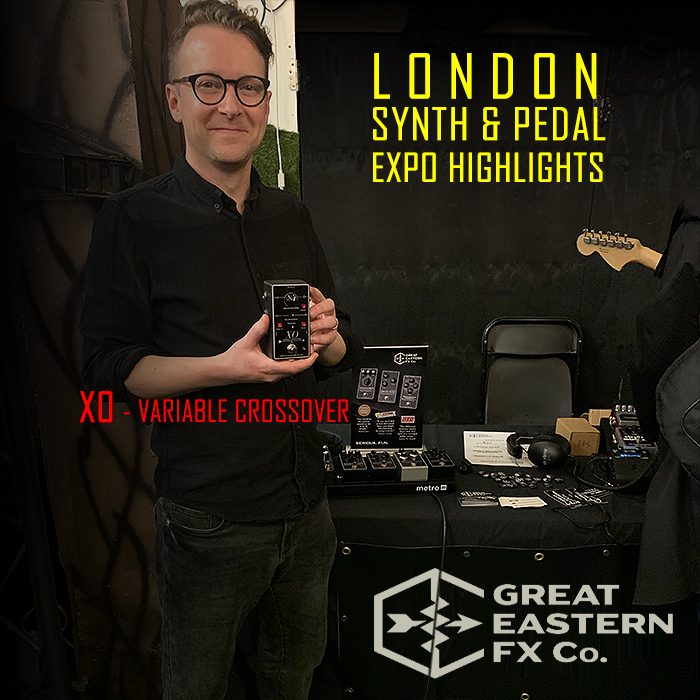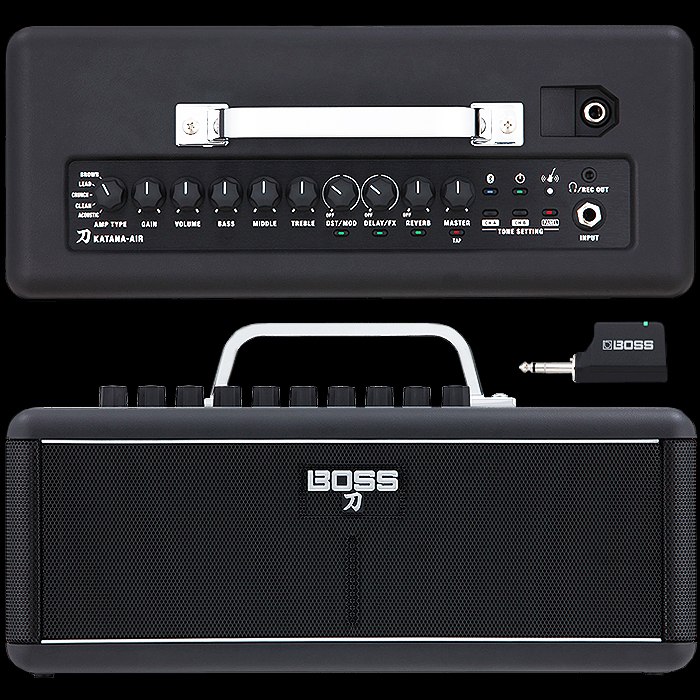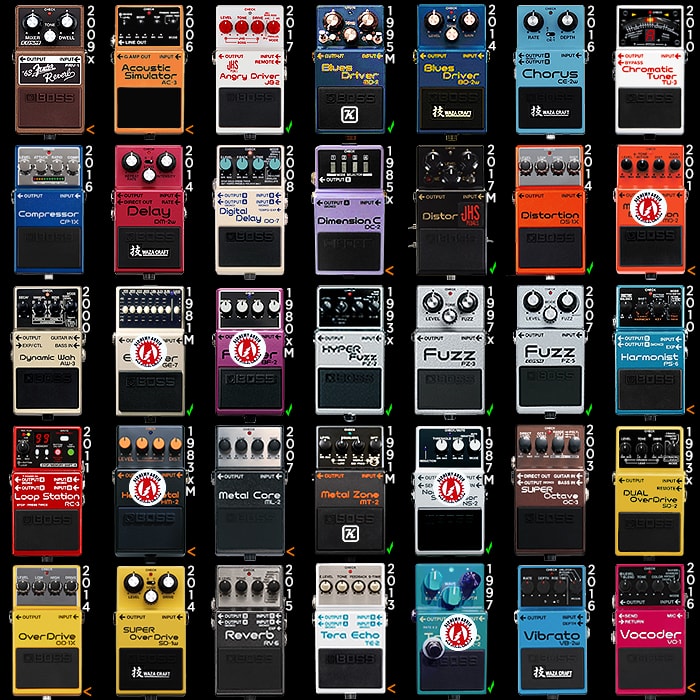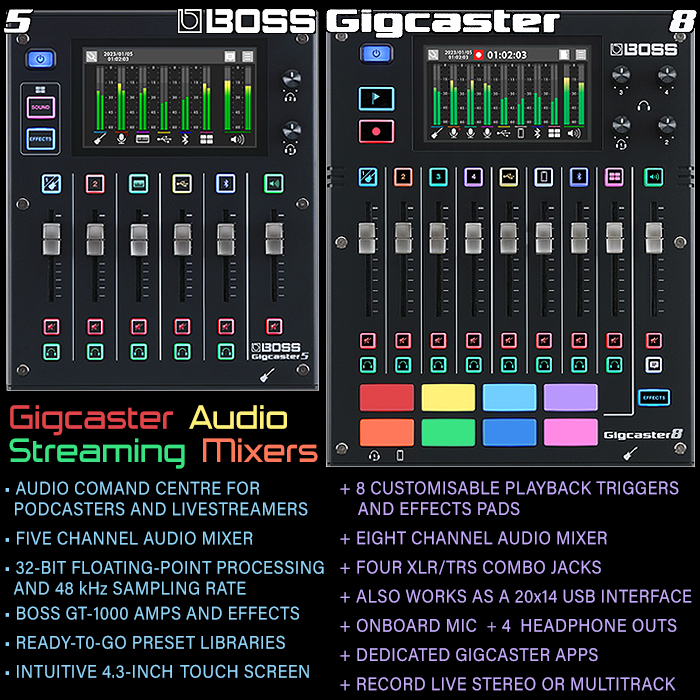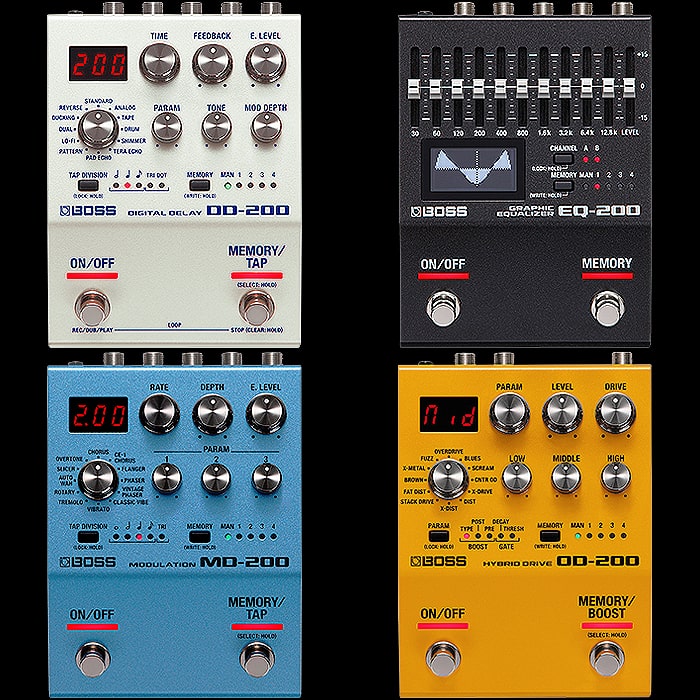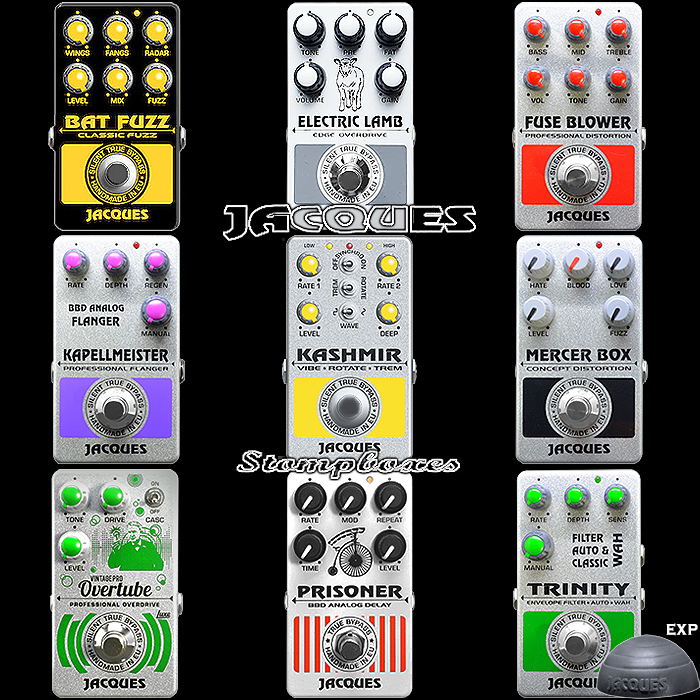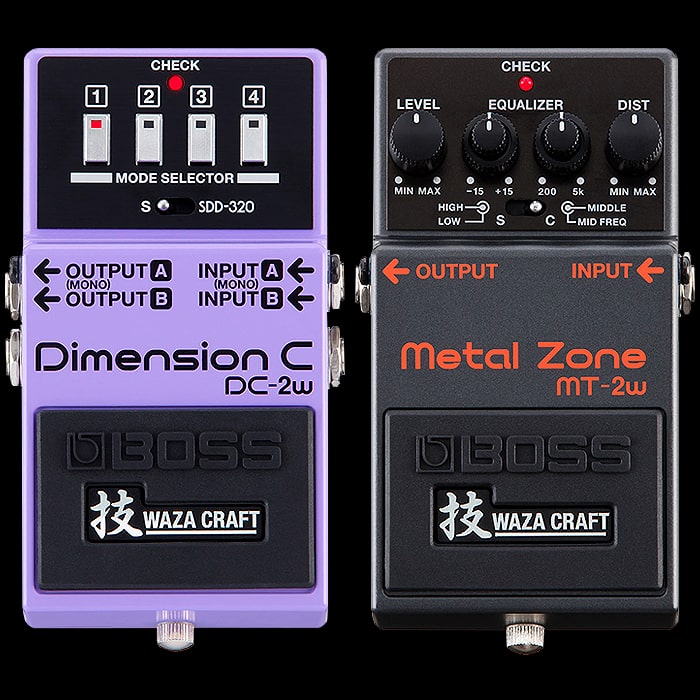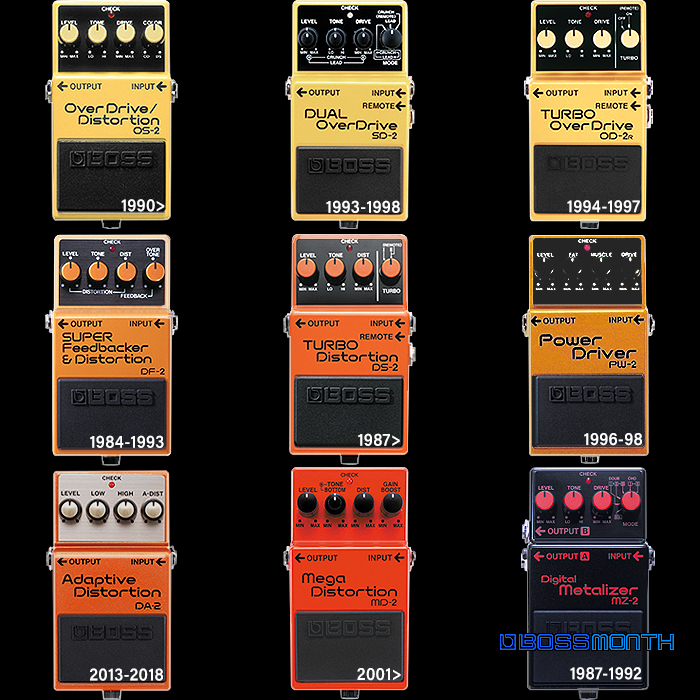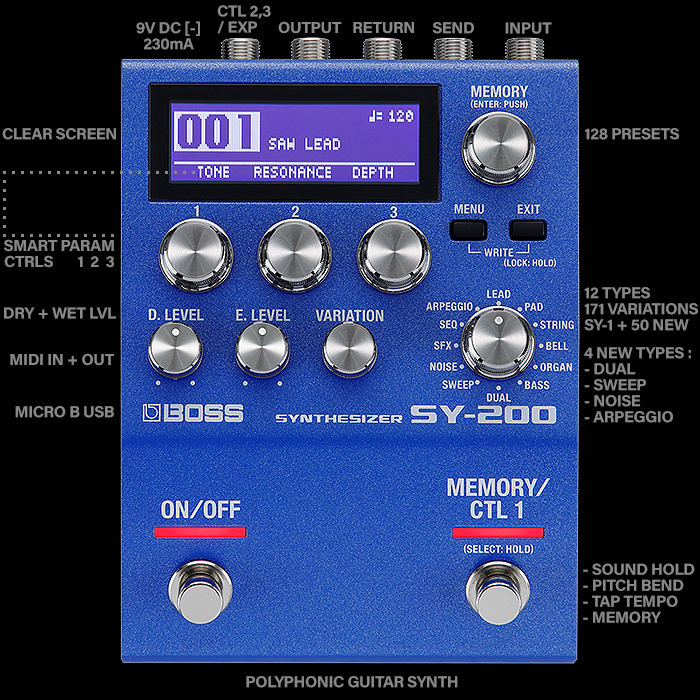Boss's DM-101 8 x BBD Chip 12 Mode Analog Delay Workstation is its best Delay unit yet - surely the greatest Analog Delay Pedal ever made!
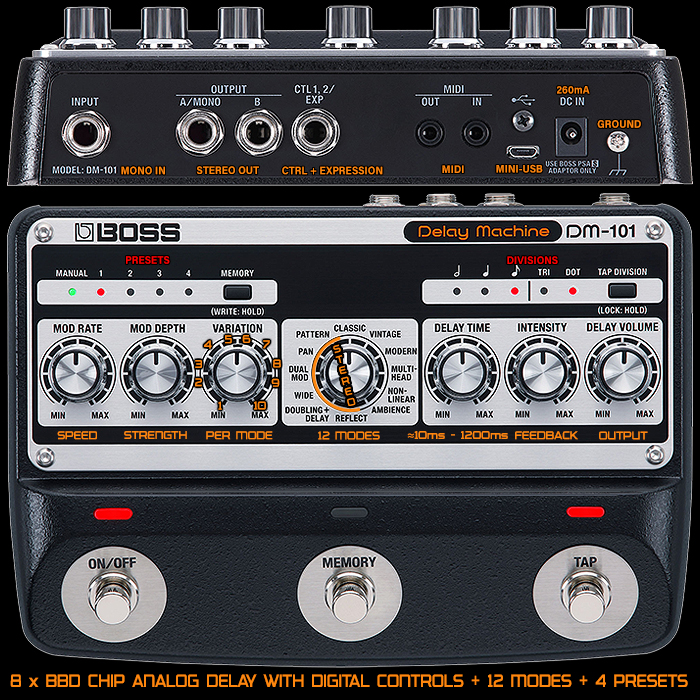
Boss is on a major roll at the moment with its specialist Delay Workstation Pedals - first with the RE-202 Space Echo EchoVerb, then the recent SDE-3000 4-Delay-Line Dual Digital Delay, and now this killer 8 x Bucket Brigade Chip Analog Delay Workstation.
In fact there’s just one caveat in that this pedal is Mono in only, while it’s unique among Boss’s larger delay pedals in having 100% Dry Thru when in standby mode.
The Modes on this device are genius - where I’ve been spending the majority of the time on the Stereo Pattern delays - where several of those are the kind of Skittery delays I usually like to set up on Tape style Echos - but here Analog-generated.
The DM-101’ output is noticeably softer and subtler than the recent SDE-3000 - and that one’s Panning Mode is a lot more obvious and distinct than the one on the DM-101 - where you really need to turn up the Stereo Width and Delay Volume to feel the same sort of impact.
This is a much easier pedal to get stuck into than the SDE-3000 - as 99% of this pedal is fully on the surface and though those surface controls - while the SDE-3000 has sub-menus and several secondary and hidden functions, and the RE-202 also has some hidden functions. The only downside with the DM-101 is its solo Mono input - which means that I can’t use many of my Stereo Modulation pedals at the same time - but I’ve rejigged the pedal-chain / signal-chain to best accommodate the DM-101 so I’m really satisfied with the setup now.
At the start I felt I might return to the RE-202 or SDE-3000 sooner rather than later - for their Full Stereo versatility, but I’ve grown to really love the DM-101 and consider it very much the best of the bunch. Its 12 fantastic modes actually make it more versatile than the other 2, while if you’re a fan of ultimate delay granularity - then the SDE-3000 is probably the one for you.
Controls - Presets : Manual (Panel Controls) / 1 - 4, Memory Button / Hold to Write / Save Presets, Tap Division Selection : Tap Division Button : Half Note / Quarter Note / Eighth Note - Triplet / Dotted, Modulation Rate, Modulation Depth, Variation / 1-10 : Different Per Mode (see below infographic), 12 Modes : MONO } Classic / Vintage / Modern / Multi-Head / Non-Linear (Reverse) / Ambience, STEREO } Reflect / Doubling + Delay / Wide / Dual Modulation / Pan / Pattern, Delay Time : ≈10ms to 1200ms (varies per Mode), Intensity / Feedback, Delay Volume, On/Off Footswitch, Memory Select Footswitch, Tap Tempo Footswitch (not active for every mode).
Note that there is a great deal of variability in Delay Time, Intensity, and Delay Volume for Different Modes and Types - Delay Time typically starts at between 10 and 40ms although some values start even higher, and goes as high as 1200ms for the Classic Mode. The self oscillation on Intensity lands variously between 2 o’c and 3 o’c. And finally - different Delay Effects impact at different levels - so the Delay Volume tends to be quite different between Modes. This basically means that you always need to tweak Variation, Delay Time, Intensity, and Delay Volume every time you change Mode! It’s not a big deal - and you soon get used to it. And of course if it’s a regular setting you find yourself using time and time again - then you can save it to one of the 4 Presets!
Boss brilliantly created an all-in-one Infographic - which covers all the essential facts that you need to know to get the most out of this device - and so I adapted and evolved that with a few more specific details - as below :
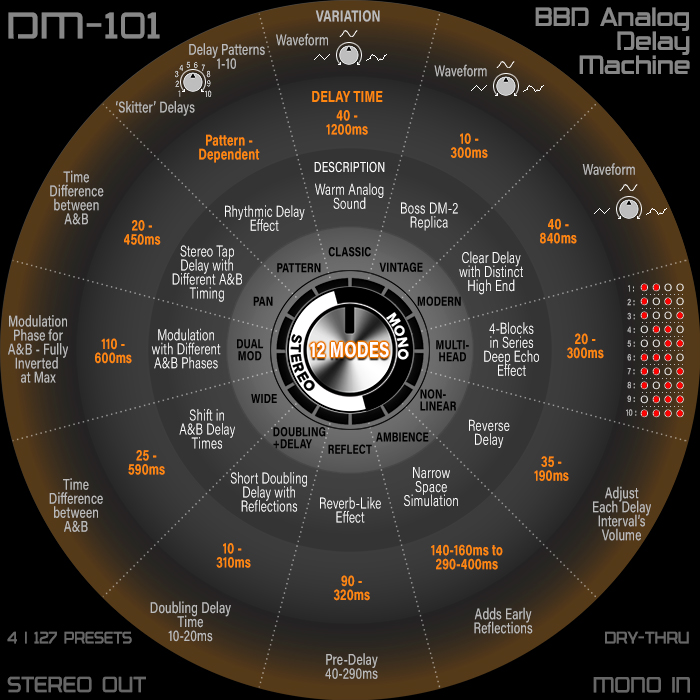
Essentially the inner ring tells you the 12 Modes - where you can see which are Stereo and which are Mono.
The second ring describes the nature of that particular Delay Mode.
The 3rd orange text ring displays the Min / Max Delay Times for each Mode.
The outer ring explains what the Variation knob controls for that Mode.
Said visual pretty much tells you near enough everything you need to know.
And using the pedal is a breeze really - as so much is on the surface with this one - you pick things up incredibly quickly.
The only challenge I had at the start was that some of the Stereo Modes did not seem to be particularly distinctly Stereo - where you have to turn up the key dials to really feel that dynamic - where the crispness of the SDE-3000 makes the ping pong action for instance much more evident.
You just need to be aware that the DM-101 by its Analog nature is softer and subtler than the digital delays - and that you need to crank some of those dials a little more on the analog edition to feel their impact.
I've tried every mode extensively - and really like each one for different usage scenarios - where I spent the most time on the Stereo Delays and the Multi-Head Delay - where overall I used Pattern, Pan and Wide the most. All Modes are exceptionally musical - and all are usable and distinct. This is a fantastic delay machine all-round - I just wish it could have stereo in too - but realise that would need even more circuitry and yet more BBD Chips - this is surely the most potent Analog Delay Machine created so far! Surely a classic in the making!
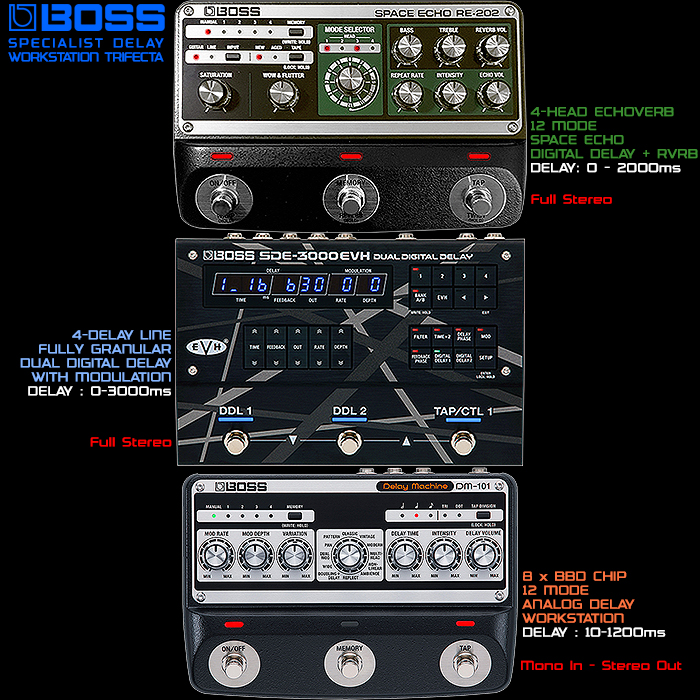
Features & Specs

- The ultimate analog delay pedal realized with advanced BOSS technology
- Fully analog BBD audio circuitry shaped by precision digital CPU control
- Warm, saturated, and highly musical tone
- 10ms to 1200ms of Analog Delay - depending on Mode
- Twelve modes deliver a wide range of mono and stereo delay textures, created using up to eight internal BBDs :
- CLASSIC
- VINTAGE
- MODERN
- MULTI-HEAD
- NON-LINEAR
- AMBIENCE
- REFLECT [STEREO]
- DOUBLING+DELAY [STEREO]
- WIDE [STEREO]
- DUAL MOD [STEREO]
- PAN [STEREO]
- PATTERN [STEREO]
- Stereo output with flexible signal routing options
- Adjustable modulation rate and depth with dedicated knobs
- Variation knob for controlling multiple parameters that are unique to each mode
- Selectable carryover for maintaining delay trails when the effect is bypassed
- MIDI I/O on mini TRS connectors
- Tap tempo function and tap division switch for creating rhythmic delays
- Four onboard memories plus the current panel settings
- 127 user memories accessible via MIDI program change
- Expandable control via external footswitches, an expression pedal, or MIDI
- Power Supply : Standard 2.1mmm 9V DC [-] with 260mA Current Draw
- Dimensions : 192 (W) x 133 (D) x 52 (H) mm / 7-9/16 (W) x 5-15/64 (D) x 2-3/64 (H) inches
- Weight : 830 g / 1 lb 14 oz
- MAP / RRP : $499 / €519 / £449
Recommended Accessories
- AC adaptor: PSD series
- Footswitch: FS-5U
- Dual Footswitch: FS-6
- Expression Pedal: FV-500L, FV-500H, Roland EV-5
- Instrument Cable: BIC Series
- TRS Cable: BCC-TRA Series
- Mic Cable: Roland RMC Series
- Headphones: Roland RH Series / V-MODA
Demos

